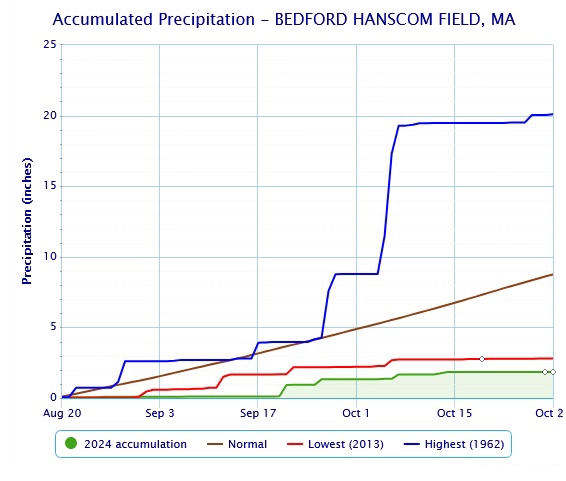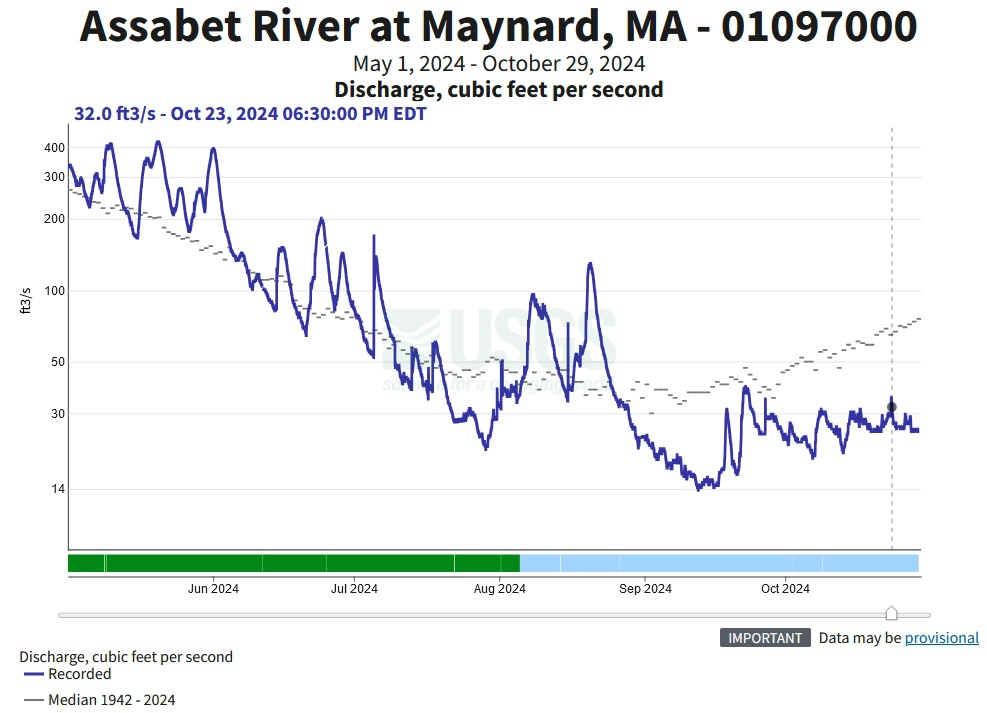Current Drought Conditions in Massachusetts: What It Means for Our Rivers
October 31, 2024
OARS River Log | By Sarah Kwan, OARS’ Director of Communications & Development | Published October 31 2024
Massachusetts is currently experiencing a Level-1 mild drought, a situation that has persisted since late summer. According to the state’s drought monitor, this classification indicates below-normal rainfall that could strain water resources and ecological systems. While it may not yet be severe enough to significantly disrupt drinking water or irrigation, the drought’s effects on river health are already evident, particularly within the Sudbury, Assabet, and Concord rivers.
Since August 20th, rainfall levels have been at record lows, as shown in historical precipitation data. Graph 1 underscores that this period saw the lowest recorded rainfall from late summer into fall. Consequently, the flow in the Assabet River has plummeted well below historical medians, as illustrated in graph 2 by flow data collected since late August.


Low river flows pose significant ecological risks, even if they do not immediately impact human water usage. With diminished water levels, fish and other aquatic species struggle to find suitable habitats. Moreover, the reduced volume of water means pollutants entering the rivers are less diluted, potentially leading to higher concentrations of harmful substances. While the current timing of the drought in the fall means the impact on biological activity is somewhat mitigated due to slower growth and metabolism in colder temperatures, the prolonged lack of water still stresses the ecosystem.
Adding to these challenges, the state has issued a high fire risk warning due to the dry conditions. Brush fires can ignite and spread rapidly, threatening local wildlife and communities. It’s vital for everyone to exercise caution and avoid activities that could unintentionally spark fires, such as open burning or the careless disposal of smoking materials.
As we continue to monitor these drought conditions and their implications for river health, OARS remains committed to advocating for practices that protect our rivers. Community involvement and awareness are crucial during these periods. Share this information with your community and stay informed about water use and fire safety recommendations.
Together, we can help safeguard the resilience of our rivers and ecosystems during challenging times. For more details and ongoing updates on drought status and how you can support conservation efforts, stay connected with OARS (sign up to recieve Otter News).
For more information on current drought conditions and fire safety advisories, visit the links provided

